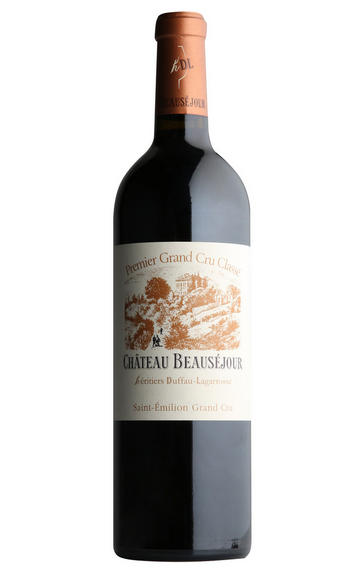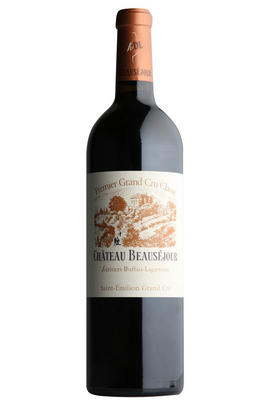
2000 Château Beauséjour Duffau-Lagarrosse, St Emilion, Bordeaux

Critics reviews
Robert M. Parker, Jr. - 29/06/2010
About this WINE

Château Beauséjour
Château Beauséjour is a 6.8-hectare jewel long recognised for the quality of its terroir; it has been a Premier Grand Cru Classé B since the first St Émilion classification. Almost half the vineyard sits atop the appellation’s limestone plateau, another half extends down onto the côtes. This was once part of a larger estate along with what is now Château Beau-Séjour Bécot.
In 2020, the estate was put up for sale. There were many bidders; the French authorities were called upon to oversee the final decision. Ultimately, members of the Duffau-Lagarrosse family bid successfully, in tandem with the owners of the Clarins beauty group.
The estate is today led by Joséphine Duffau-Lagarrosse and Prisca Courtin-Clarins, both of whom are in their early 30s. They took the reins with the 2021 vintage, following the acclaimed stewardship of Nicolas Thienpont and his team.

St Émilion
St Émilion is one of Bordeaux's largest producing appellations, producing more wine than Listrac, Moulis, St Estèphe, Pauillac, St Julien and Margaux put together. St Emilion has been producing wine for longer than the Médoc but its lack of accessibility to Bordeaux's port and market-restricted exports to mainland Europe meant the region initially did not enjoy the commercial success that funded the great châteaux of the Left Bank.
St Émilion itself is the prettiest of Bordeaux's wine towns, perched on top of the steep limestone slopes upon which many of the region's finest vineyards are situated. However, more than half of the appellation's vineyards lie on the plain between the town and the Dordogne River on sandy, alluvial soils with a sprinkling of gravel.
Further diversity is added by a small, complex gravel bed to the north-east of the region on the border with Pomerol. Atypically for St Émilion, this allows Cabernet Franc and, to a lesser extent, Cabernet Sauvignon to prosper and defines the personality of the great wines such as Ch. Cheval Blanc.
In the early 1990s there was an explosion of experimentation and evolution, leading to the rise of the garagistes, producers of deeply-concentrated wines made in very small quantities and offered at high prices. The appellation is also surrounded by four satellite appellations, Montagne, Lussac, Puisseguin and St. Georges, which enjoy a family similarity but not the complexity of the best wines.
St Émilion was first officially classified in 1954, and is the most meritocratic classification system in Bordeaux, as it is regularly amended. The most recent revision of the classification was in 2012

Cabernet Sauvignon Blend
Cabernet Sauvignon lends itself particularly well in blends with Merlot. This is actually the archetypal Bordeaux blend, though in different proportions in the sub-regions and sometimes topped up with Cabernet Franc, Malbec, and Petit Verdot.
In the Médoc and Graves the percentage of Cabernet Sauvignon in the blend can range from 95% (Mouton-Rothschild) to as low as 40%. It is particularly suited to the dry, warm, free- draining, gravel-rich soils and is responsible for the redolent cassis characteristics as well as the depth of colour, tannic structure and pronounced acidity of Médoc wines. However 100% Cabernet Sauvignon wines can be slightly hollow-tasting in the middle palate and Merlot with its generous, fleshy fruit flavours acts as a perfect foil by filling in this cavity.
In St-Emilion and Pomerol, the blends are Merlot dominated as Cabernet Sauvignon can struggle to ripen there - when it is included, it adds structure and body to the wine. Sassicaia is the most famous Bordeaux blend in Italy and has spawned many imitations, whereby the blend is now firmly established in the New World and particularly in California and Australia.


Buying options
Add to wishlist
Description
Beauséjour-Duffau's owner Jean-Michel Dubos consistently produces a classic and complex St Emilion which shows at its best with at least 6 to 7 years of bottle age. This example may take a little longer because of the success of the vintage. It has a complex, black berry, tar and mineral character.
wine at a glance
Delivery and quality guarantee